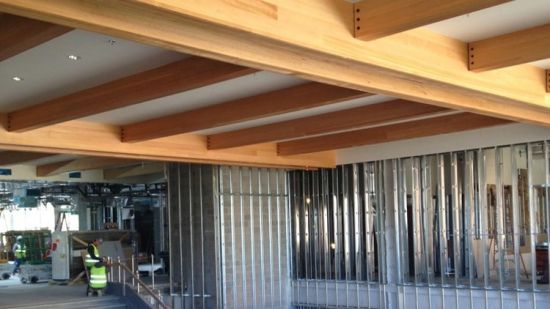How a Building is Designed and Built - Part 4 of 6
This post was published 4 years ago. Download links are most likely obsolete. If that's the case, try asking the uploader to re-upload.
h264, yuv420p, 1280x720, 68 kb/s, 30 | English, aac, 44100 Hz, 2 channels, s16, 127 kb/s | 2h 30mn | 246 MB
Instructor: Matthew Morris
Interiors and Site Work - Interior Partitions, Finishes, Specialties, Paving, Hardscape and Landscaping Construction
What you'll learn
Identify the Numerous Components, Materials and Systems in a Commercial Building
Describe the Sequence of Construction and Relationships Between Construction Activities
Identify the Roles of the Major Parties Involved in the Design and Construction of Building Systems & Materials
Describe the Numerous Considerations When Choosing Different Building Materials and Systems
Develop a Construction and Engineering Vocabulary
Evaluate Key Constraints and Select All of the Appropriate Major Systems and Materials in a Building
Requirements
You should have an interest in the way buildings are designed and built.
Description
No matter which role you have in a building construction project, it is vital that you understand the "guts" of a building in order to make a positive impact. For contractors, engineers, architects, real estate developers and facilities managers, it takes years or even decades to learn the materials and systems in a building. The typical source of this education is on-the-job because this material is not taught in schools. Young professionals spend an extraordinary amount of time trying to understand the complexities of a modern building. Every project is different and the materials and systems can change drastically from one building to the next. Time can be better spent by adding value to projects instead of learning terminology and construction sequencing. The lessons in the course have been developed to boil down years of on-the-job training into high-impact, bite-sized classes.
Who this course is for:
Anyone working or interested in building materials and systems. The typical audience includes general contractors, specialty contractors, architects, engineers, building owners, construction managers, real estate developers and managers, facility operators and managers, engineering students, first responders or anyone with curiosity related to the "guts" of a building!
Screenshots
Download from free file storage
Resolve the captcha to access the links!
Registered members don't get captcha ... just sayin

